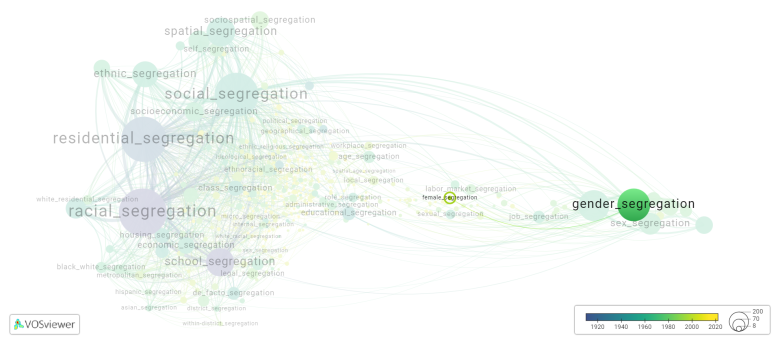Female segregation
Date and country of first publication[1]
2006
China; United States
Definition
Female segregation refers to the practice of separating women or girls from men or boys in certain social, cultural, or institutional settings. It can occur in various forms and contexts, such as in education, employment, public spaces, sports, or religious places.
Historically, female segregation has been prevalent in many societies, often rooted in traditional gender roles and beliefs about women's limitations or inferiority. Examples include the practice of keeping women confined to domestic spaces, separate schools or classrooms for girls, limited career options for women, or restrictions on women's access to public spaces.
In some cases, female segregation is enforced through legal or religious mandates. For instance, there are places where women are required to be accompanied by a male guardian in public, or where certain professions or activities are restricted to men only.
While female segregation is gradually being addressed and dismantled in many parts of the world, gender-based inequalities and discrimination still persist. Efforts to promote gender equality and challenge gender stereotypes aim to break down barriers and create inclusive spaces where women can participate and thrive on an equal footing with men.
See also
Related segregation forms
Female segregation is frequently discussed in the literature with the following segregation forms:
gender segregation, role segregation, social segregation

This visualization is based on the study The Multidisciplinary Landscape of Segregation Research.
For the complete network of interrelated segregation forms, please refer to:
References
Notes
- ↑ Date and country of first publication as informed by the Scopus database (December 2023).
Female segregation appears in the following literature
Amuedo-Dorantes C., De La Rica S. (2006). The Role of Segregation and Pay Structure on the Gender Wage Gap: Evidence from Matched Employer Employee Data for Spain. B.E. Journal of Economic Analysis and Policy, 5(1), -. De Gruyter Open Ltd.https://doi.org/10.1515/1538-0645.1498
Cai H., Wu X. (2006). Social changes and occupational gender inequality. Chinese Sociology and Anthropology, 38(4), 37-53. https://doi.org/10.2753/CSA0009-4625380402
Mumford K., Smith P.N. (2009). What determines the part time and gender earnings gaps in Britain: Evidence from the workplace. Oxford Economic Papers, 61(SPEC. ISS.), i56-i75. https://doi.org/10.1093/oep/gpn041
Johnson B.J., Crum-Cano B.D. (2011). Glass walls in urban planning: An examination of policy type and gender segregation within a profession. Review of Public Personnel Administration, 31(4), 386-409. https://doi.org/10.1177/0734371X11408702
Sikora J., Pokropek A. (2012). Gender segregation of adolescent science career plans in 50 countries. Science Education, 96(2), 234-264. https://doi.org/10.1002/sce.20479
Simón H. (2012). The gender gap in earnings: An international comparison with European matched employer employee data. Applied Economics, 44(15), 1985-1999. https://doi.org/10.1080/00036846.2011.558477
Kompa K., Witkowska D. (2018). Factors affecting men’s and women’s earnings in Poland. Economic Research-Ekonomska Istrazivanja, 31(1), 252-269. Taylor and Francis Ltd..https://doi.org/10.1080/1331677X.2018.1426480
Agrizzi D., Soobaroyen T., Alsalloom A. (2021). Spatiality and accounting: The case of female segregation in audit firms. Accounting, Organizations and Society, 93(), -. Elsevier Ltd.https://doi.org/10.1016/j.aos.2021.101238
Lugo D.C., Fernández D.D., Heras R.L., Pérez R.E.R. (2022). Female segregation: A Mexico Spain comparison. The Economics of Women and Work in the Global Economy, 99-129. Taylor and Francis Inc..https://doi.org/10.4324/9781003198314-7
